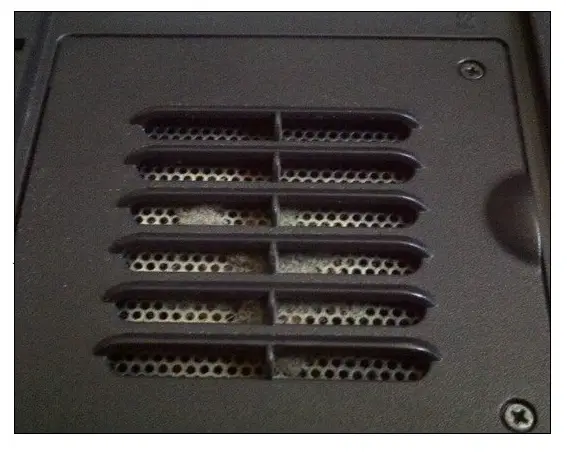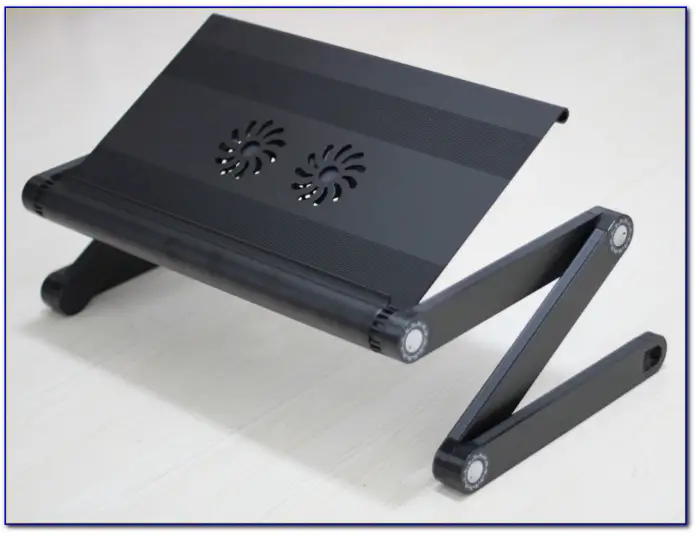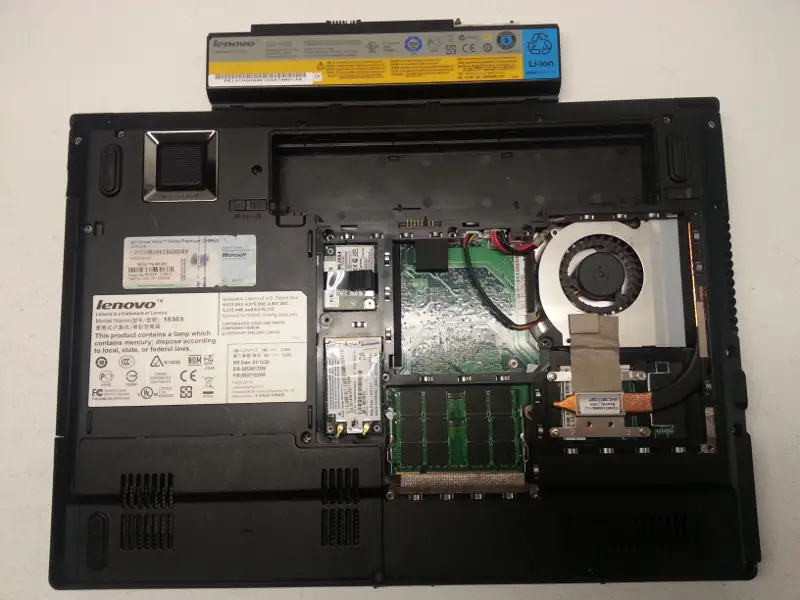
The skills necessary to diagnose and fix an overheating laptop can seem intimidating. The majority of these steps are very easy to carry out.
A regular maintenance schedule will go a long way in extending the life of your PC.
Laptops offer a lot of conveniences, but they’re also at higher risk for certain problems. One of the biggest threats to laptop components is heat buildup.
Tight spaces and restricted air flow is the perfect environment for temperatures to rise quickly. In order to diagnose an overheating laptop, it is important to know what to look for.
If your laptop is older or plagued with technical problems, it could be at a higher risk of overheating.
Faulty or dust covered fans, clogged airways, and incorrect BIOS settings can all lead to overheating.
Some of these problems are easier to correct than others. Common products and online guides can resolve most, but others may require you to seek help from professional technicians.
Laptop Cooling System Components
Know the Signs to Diagnose an Overheating Laptop
When a laptop begins overheating, the symptoms may be hard to notice at first. Follow the tips below.
TIP NUMBER 1. Feel around exhaust vents

Exhaust Vents can also be located in the rear of the laptop.
To check the laptop’s temperature (the quick way) feel around the exhaust vent and touch the surface of material below the keys. Also place your hand on the bottom of the laptop and feel for heat. If it feels too hot, it’s probably a good idea to inspect things further.
If your computer is working hard, it isn’t uncommon to feel a bit of warmth. However, you should begin inspecting the laptop if the problem persists.
High temperatures shouldn’t be a product of low-level tasks and standard multitasking that falls within the computer’s specs.
While the warmth of an overheating laptop is one of the first indicators people notice, there are other ways you can check for this problem.
TIP NUMBER 2. Look and Listen for Overheating
If your laptop fan is louder than usual and constantly running at high rpms, it could be a sign that the processor is not being properly cooled. Usually this is a result of a clogged heat sink.

Clogged heat sink is one of the prime suspect in laptop overheating.
In addition thermal compound tends to deteriorate over time. Dried up thermal paste does not do a good job of transferring heat to the heat sink? I have notice this happening on older laptops.

Dry thermal paste on processor and graphic’s chip. This will also lead to higher than normal temperatures. As you can see there is way too much thermal paste used.
TIP NUMBER 3. Use software to monitor temperatures
You can also diagnose an overheating laptop by using third party software. You can use a free program like Speccy to monitor your laptop’s temperature.

Speccy is very useful software that provides lots of information other than temperature readings
Idle temperatures vary by processors. You will have to do some research for your particular CPUs maximum temperatures.
In laptops, a temperature above 60 degree Celsius and climbing during idle operation is an indication of overheating.
Processors will shut down automatically when temperatures have exceeded safe levels. This is a safety feature built in the processor.
TIP NUMBER 4. Clear all intake vents

Intake vents are prone to collect dust bunnies.
(Before performing these steps make sure to power down your laptop and remove your battery if possible.)
Brush off all clogged intake vents to promote proper air flow. Heat transfer is dependent on good air flow.
You need to make sure all intake vents are cleared of dust. Check the bottom and rear of laptop for intake vents.

A good stiff brush comes in handy for removing stubborn dust buildup.
Compressed gas cleaning dusters can also help in cleaning the loose dust of the intake and exhaust vents.

Keep your laptop clean by using a cleaning duster that uses moisture-free bursts of ozone-safe compressed air to efficiently remove dirt and soils.
Frankly I am hesitant to advise the use of compressed air to clean the exhaust vent.

Exhaust vents can also be located in the rear of laptop.
The reason is that you can end up blowing a wad of dust back into the fan and clog it up. In this situation your laptop will shut down immediately if the fan does not spin on start up.
Proceed at your own risk. Use short controlled burst. You do not want to over spin the cooling fan.
Some laptops have a bottom panel that can be removed to expose the cooling fan. If you have access to the fan then it will be much easier to dust off and clean the fan.
This would be the ideal solution short of taking the laptop apart.
TIP NUMBER 5. Keep the laptop on a hard flat surface
Uneven surfaces, like a blanket, pillow, carpeting, or your lap will obstruct the air vents. This will decrease airflow and eventually lead to an overheated laptop.

Using the laptop on top of the bed is not recommended.
To prevent overheating in these types of situations, consider purchasing a laptop stand.

A laptop stand is a great option when you need a portable surface.
Can You Fix an Overheating Laptop Yourself?
Unlike desktop computers, laptops aren’t so easy to pop open and work on. This is a trade-off you make for the increased portability, but it can make things frustrating when you’re trying to fix an overheating laptop.
Some problems can be handled without any professional experience. Only you can determine how far you will go before calling in an experienced technician.
If your laptop is overheating because the BIOS settings are incorrect, you can always rely on the “restore to default setting” option.
One of the most common causes of a laptop or desktop overheating is a processor (either CPU or GPU) being overclocked to unsafe levels, or being clocked high with an inadequate cooling device.
In the end you will have to decide if your skill level will allow you to disassemble and re-assemble a laptop successfully.
Calling the Professionals to Fix an Overheating Laptop
If after performing these basic steps you still notice that the laptop is overheating, then it’s time to call a PC repair technician. Get in touch with me by clicking the “Contact Me” button.
Since most people don’t have the time, parts or experience to work on their laptop safely, calling in a professional technician could be the best solution.
Older computers are often at a higher risk for overheating as their components age. Computers pushed to perform tasks that stretch their abilities can also experience part failure at a much quicker rate.
Professional technicians can sometimes recommend new parts to match your system and help it stay cool.
To fix an overheating laptop requires you to know the warning signs. But by servicing and checking your laptop regularly, you can avoid dealing with a problem that has plagued laptop lovers for decades.



